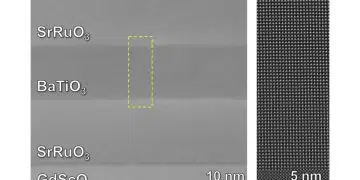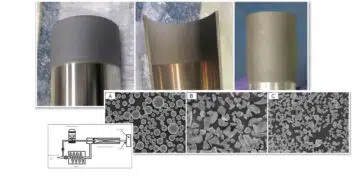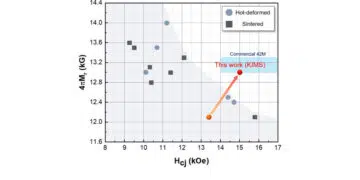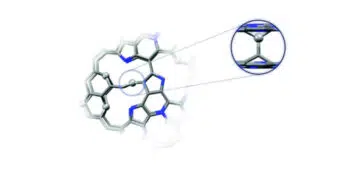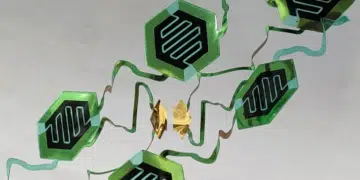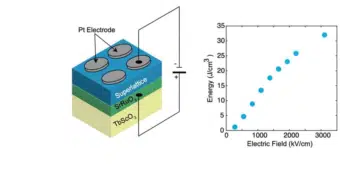New Technologies
Researchers Developed BaTiO3 Ultrathin Ceramic Capacitors for Microchips
Team of researchers at Lawrence Berkeley National Laboratory (Berkeley Lab) and UC Berkeley have identified one energy-efficient route – by...
Read moreDetailsResearchers 3D Printed Superior Soft Magnetic Cores with Laser Additive Process
Researchers from the Tallinn University of Technology and the Estonian University of Life Sciences are investigating the use of 3D printing technology to produce...
Read moreDetailsGAM Introduces Tantalum and Niobium Powders for Cold Spray Applications
Global Advanced Metals (GAM) introduces high purity tantalum and niobium powders suitable for additive process including Cold Spray technology. The...
Read moreDetailsELOHIM Develops Ultra-Small Size High-Density Silicon Capacitors
ELOHIM, a South Korean high-tech silicon capacitor semiconductor R&D company, has partnered with a global company to develop an ultra-small...
Read moreDetailsResearchers Developed Neodymium Reduced High Performance Magnets
KIMS Korea Institute of Materials Science research team developed rare-earth-reduced permanent magnet that can achieve the commercial magnet (grade 42)...
Read moreDetailsResearchers Demonstrated Quantum Memristor as a Link between AI and Quantum Computing
Quantum memristor is a missing link between AI artificial intelligence and quantum computing. Researchers from University if Vienna have now...
Read moreDetailsResearchers Aim Prototyping of Next Gen High-Energy Graphene Supercapacitors
A high-energy, high-power density safe, and environmental friendly next gen supercapacitor, i.e., a device for storing electrical energy, will be...
Read moreDetailsSustainable Nitrogen Doped Graphene Electrode Material Yield Record High Energy and Power Density Supercapacitors
Nitrogen-enriched graphene material developed by researchers from CATRIN Regional Centre of Advanced Technologies and Materials (RCPTM), Olomouc, Czech Republic is...
Read moreDetailsResearches Developed Fast and Low Cost Prototyping Technique to Make Wearable Stretchable Sensors and Supercapacitors
Engineers at UC Berkeley have developed a new technique for making stretchable flexible electronics - wearable sensors and supercapacitors -...
Read moreDetailsResearchers Propose New Lead-Free Antiferroelectric Material for High Energy Capacitors
Group of researchers from Cornell University, US propose a new lead-free antiferroelectric dielectric material made from bismuth, iron and oxygen...
Read moreDetails


















